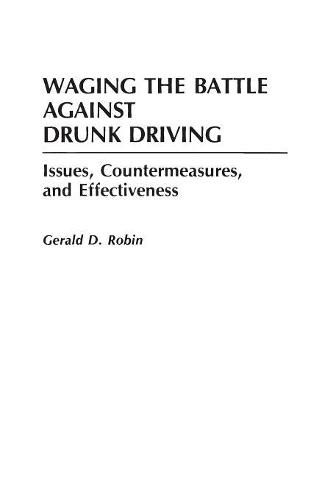Readings Newsletter
Become a Readings Member to make your shopping experience even easier.
Sign in or sign up for free!
You’re not far away from qualifying for FREE standard shipping within Australia
You’ve qualified for FREE standard shipping within Australia
The cart is loading…






This is a comprehensive examination of the contemporary movement against drunk driving. The volume addresses all major subsantive aspects of the anti-drunk driving effort including society’s changing attitudes and response to the crime itself and the offenders, the role of grass roots groups such as MADD and RID, federal and state initiatives, actions and enabling legislation, and anti-drunk driving programs and projects. Gerald D. Robin takes a socio-legal approach throughout, emphasizing the rationales behind, controversies surrounding, and effectiveness of new strategies and developments to combat drunk driving. Following two introductory chapters, which outline the dimensions of and societal responses to the drunk driving problem, the chapters are arranged to reflect the chronological processing of suspects through the justice system from the point of stopping them on the road to the final disposition of cases in court. Thus, individual chapters treat issues such as sobriety checkpoints, administrative license suspension, prosecuting and defending drunk drivers, mandatory sentencing, third party liablility, and deterring drunk driving. Numerous photographs and figures illustrate points discussed in the text. Suitable as a supplemental text for criminology courses, this book is also suitable resource for professionals involved in treating drunk drivers and their victims.
$9.00 standard shipping within Australia
FREE standard shipping within Australia for orders over $100.00
Express & International shipping calculated at checkout
This is a comprehensive examination of the contemporary movement against drunk driving. The volume addresses all major subsantive aspects of the anti-drunk driving effort including society’s changing attitudes and response to the crime itself and the offenders, the role of grass roots groups such as MADD and RID, federal and state initiatives, actions and enabling legislation, and anti-drunk driving programs and projects. Gerald D. Robin takes a socio-legal approach throughout, emphasizing the rationales behind, controversies surrounding, and effectiveness of new strategies and developments to combat drunk driving. Following two introductory chapters, which outline the dimensions of and societal responses to the drunk driving problem, the chapters are arranged to reflect the chronological processing of suspects through the justice system from the point of stopping them on the road to the final disposition of cases in court. Thus, individual chapters treat issues such as sobriety checkpoints, administrative license suspension, prosecuting and defending drunk drivers, mandatory sentencing, third party liablility, and deterring drunk driving. Numerous photographs and figures illustrate points discussed in the text. Suitable as a supplemental text for criminology courses, this book is also suitable resource for professionals involved in treating drunk drivers and their victims.